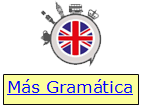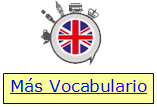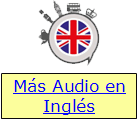|
British Castles
Pronunciation: castles (silent ‘t’)
What is a castle? – “A castle (from Latin: castellum) is a type of
fortified structure built in Europe and the Middle East during the
Middle Ages by European nobility.” – Wikipedia
“a private fortified residence”
Vocabulary
Moat – a deep, broad ditch, either dry or filled
with water, that surrounds a castle to provide it with a first line of
defence. (foso/a)
Drawbridge – a bridge that can be raised (puente levadizo)
Battlement – a narrow wall built along the outer edge of the wall walk
to protect soldiers against attack. (almena)
Dungeon – the jail, usually found in one of the towers. (calabozo,
mazmorra)
Keep -the inner stronghold of the castle (fortaleza, torreón)
Portcullis – vertical sliding wooden/iron grille suspended in front of a
gateway designed to protect the gate. (rastrillo)
Turret – a small tower rising above one of the main towers, usually used
as a look-out point. (torrecilla)
Murder holes – holes in the ceiling through which scalding liquid, like
oil or tar, or rocks, arrows etc would be poured or thrown on the enemy
Fort – from Latin: fortis. (More or less) a synonym for castle, but some
scholars argue that a fort is exclusively for military purposes, whereas
a castle may or may not be.
Fortress – a very big fort
Famous Castles
Windsor Castle (20 miles west of London)
At 900 years old, Windsor Castle is the largest occupied castle and
oldest official royal residence in the world.
The Queen goes there at the weekends.

Hampton Court Palace (in Surrey along the River Thames)
Occupied by Henry the VIII, famous for having 6 wives and beheading 2 of
them.
Now it’s a tourist attraction.
Edinburgh Castle (Edinburgh, Scotland – 400 miles north of London)
The most besieged castle in Britain – assaulted more than 20 times.
Houses the Scottish crown jewels.
The Tower of London (Tower Hill underground Station)
Home of the Queen’s Crown Jewels
It has been a zoo, a palace, a prison, a Royal Mint, a garrison (una
guarnición) and a home.
It was a zoo from 1210 until 1832 and had elephants, lions, polar bears
and grizzly bears. The price of admittance was a dog or a cat to throw
to the lions.
Dover Castle (at the White Cliffs of Dover, South of England)
Built by Henry II – the military key to England.
It has defensive tunnels under it which were built during the Napoleonic
Wars in case of invasion by the French.
Boats left from here in the Second World War to evacuate Dunkirk.
There’s a huge anti-nuclear bunker built for the government here ready
for World War Three!
Warwick castle (on the A40 between Oxford and Birmingham – in the middle
of England)
Great day out for all the family – Medieval dungeons, battlements,
gardens, archery, hawking demonstrations (hawk = halcón), a giant
catapult that shoots fireballs and a new hi-tech attraction called The
Time Tower.
Caernarfon Castle (North-west Wales just outside Snowdonia National
Park)
The castle cost between £20,000 and £25,000 from the start until the end
of work in 1330. A whole year’s taxes.
Built by King Edward I to intimidate the Welsh. it has huge Polygonal
towers (more than three sides).
Carrickfergus Castle (11 miles from Belfast, on the Irish Sea coast)
Considered one of the finest preserved Norman castles, built in 1177 by
John de Courcy.
It has been occupied and attacked by Norman, Irish, Scottish, English
and French forces.
It was used as a garrison as late as World War II.
Facts about castles
There were no toilets – waste went out through a hole and into the moat.
The first castles were made of wood and built by the Normans (who came
from Normandy, France).
The biggest castle in the world is Prague castle.
Castles always had a spiral stairway that turned clockwise to give the
advantage to right-handed swordsmen.
There are 1500 castle sites in England. About 300 castles are still
standing and in reasonable condition.
 *Dispones
de más
PODCAST en inglés publicados en los cuadernos anteriores *Dispones
de más
PODCAST en inglés publicados en los cuadernos anteriores
a los que puedes acceder directamente así como al índice de su
contenido. |
|
|
